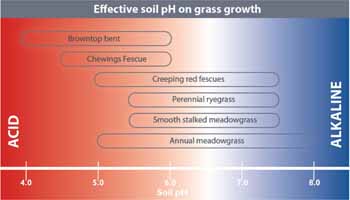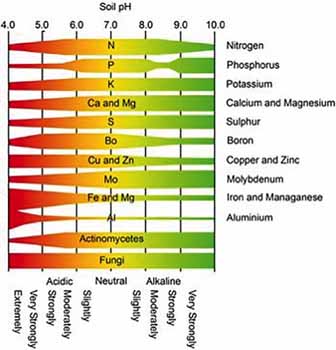What’s beneath our feet?
Related Articles
What happens when you can see that there are problems with your turf but there are no obvious causes? Dr Christian Spring encourages greenkeepers to hunt for clues below their feet
As soil is opaque, it is hard to see what is going on, but there are pointers there if you know what to look for. Are there root or capillary breaks? Are there layers where growing conditions are poor, such as black layer or waterlogged regions? However, sometimes we can’t see what is causing the issue.
Step-up soil testing. Being able to test soil to assess the physical and chemical growing environment of turf can be a critical tool in resolving issues. If it was felt that the causes of observed problems lay in the soil growing environment, what can we do to shine a light onto these causal factors?

Take good representative soil samples
There are some golden rules we need to follow for how we take soil samples from sport surfaces and how we do this will be directed by the nature of the turf issues.
If we are doing routine testing, then a representative sample from across the whole pitch or green is essential (Figure 1). This is best achieved by taking multiple cores from across the whole surface, so that the sample is representative of all the topographical and environmental gradients we typically see across playing surface.
However, if we have only certain areas affected by a particular problem, the best approach is to take multiple samples from the affected area, as one sample, and then multiple samples from unaffected turf in the surrounding area. By taking separate samples from both areas, it allows comparison of the affected turf with unaffected healthy turf.

What to test for?
The type of diagnostic test needed will depend on whether the testing is part of a routine monitoring programme or to investigate particular turf issues. However, we can divide testing into whether we are interested in the physical or chemical environment.
Physical testing of a soil or rootzone tends to focus on the following aspects:
- Particles’ size analysis of the components that make up the soil
- Organic matter content of the soil, either on bulk construction materials or measured at various depths down a profile
- Air / water balance in the soil, as defined by the proportion of the pore structure that is filled with air or water under typical conditions
- Water flow through the rootzone to provide a direct indicator of drainage capacity.
Chemical testing tends to investigate the following:
- Soil pH
- Plant available nutrients, such as phosphorous, potassium, calcium and magnesium
- Phytotoxic contaminants, such as heavy metals.
Physical testing
Testing of the physical components of a soil or rootzone, to establish how they fit together and their effect on the physical growing environment, is most often carried out during construction of a surface. Physical testing is often carried out as part of the feasibility and design stages of sports surface construction. Testing should also be carried out during the building of the surface to ensure that the materials install meet the design specification.
However, on problematic surfaces, physical testing is often used to diagnose issues and help to identify mitigation strategies. For example, if a surface is not draining sufficiently and is retaining too much water, physical testing will be important to identify the root causes and therefore highlight what could be done to resolve these issues.
This will often involve analysis of:
- The presence of any layering (especially with fine materials that would retard drainage)
- The fineness of the particles making up the growing medium, as how the individual particles fit together strongly affects drainage
- The pore size distribution, which affects both drainage and water retention
- Presence of organic layers that hold onto water and can retard water infiltration
- Measurement of compaction at different depths in the profile.

Chemical testing
Testing a growing medium for its chemical characteristics is often important as part of both routine maintenance and when resolving specific turf issues. One of the most important soil chemical properties is pH.
This property strongly affects the ecology of the soil environment and what will grow in it. Grass species have specific pH preferences (Figure 2), which means that turf managers can use soil pH modification to encourage grass species they want and discourage those they don’t.
Modification of soil pH is often used on golf courses to encourage fine grass species, such as fescues and browntop bent, whilst discouraging earthworm activity (earthworms tend to prefer neutral pH or mildly alkaline soils).
Soil pH also has a significant effect on soil nutrient availability (Figure 3). Most plant nutrients tend to be available when soil pH is around neutral. If we see deficiency symptoms, there may be sufficient nutrient present, it may just be locked up due to extremes of pH. By adjusting pH, it is possible to release those locked-up nutrients. However, before trying to adjust soil pH it is essential to look at the whole agronomic situation to ensure that by solving one issue, another more problematic issue, such as worm casting activity, is not created.
Assessing the exact nutrient requirements of turf and relating this to fertiliser recommendations is a very important but often confusing agronomic subject. The aim is simple, to provide enough nutrients during a grass plant’s growing season to maintain plant health and optimal growth. However, the execution is often less straight forward. This is in due to:
- Deficiency symptoms in grass plants can often be difficult to tell apart from other stress symptoms
- Different theories about what constitutes sufficient levels of nutrition
- Differences between laboratory test methods in how much nutrient is extracted from the soil and how plant available that nutrient it
- Interpretation of what levels of nutrient constitute low, adequate or high.
Soil testing is often used to provide an indicator of soil nutrient status. From this any deficiencies in any of the nutrients can be assessed and addressed.
Typically, a standard soil nutrient analysis will comprise soil pH, available phosphorous and potassium and could also include soil calcium and magnesium. These provide indicators of what key nutrients might be needed. It is noticeable that nitrogen, one of the most important plant nutrients, is not measured. Why is this? Because the release of nitrogen in soils is controlled by microbial activity.
If a sample was taken and it sits in a warm moist environment in the plastic bag during shipping, nitrogen will be released as a result of microbial activity, and therefore available nitrogen levels will be considerably different to those under field conditions. Therefore, to assess soil nitrogen requirements, it is much better to use grass growth data, plant health information and past experience to set nitrogen input levels.

Super sleuth
Soil testing can be a very useful tool in a turf sleuth’s armoury. It can give us a great way to visualise and understand aspects of the soil’s physical and chemical environment that may be detrimental to plant health and growth.
However, we must remember that soil testing is only as good as the test methods used and for these data to be useful they need careful interpretation, based on scientific knowledge and experience.
Therefore, it pays to go through soil testing results with an agronomist to interpret what areas may or may not be of concern. Soil testing is a very useful tool. It is certainly not the answer to a problem, but will help us get to the answer!
Dr Christian Spring is the STRI’s research operations manager

























